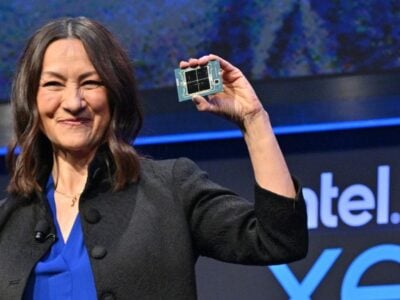
Silica moves to fast lane in Europe’s LED market
Silica, a subsidiary of Avnet, currently has LED products from Sharp, Seoul Semiconductor and Philips Lumileds in its portfolio. The company does not define itself as a simple distributor as it plans to provide bespoke solutions that include all optical elements, power supplies and similar add-on components. While the company only recently began offering these solutions, several projects are already active at various customer sites, Bielesch said. The power supplies for these solutions are provided by Silica’s sister company Avnet Abacus from a selection of products from different manufacturers.
"Our focus is general lighting," Bielesch explained. This includes everything customers need for indoor, office and home lighting as well as outdoor lighting. Automotive lighting is not the company’s primary focus. Bielesch estimates the size of the total available lighting market at about €70 billion worldwide; automotive lighting accounts for about €13 billion. Backlighting applications represent a significant share of the market, but in this segment the market saturation point is already approaching. The penetration rate here is currently about 60 per cent, as opposed to general lighting where Bielesch only sees about 10 per cent penetration. "The phasing out of high wattage incandescent light bulbs is generating significant growth in demand," Bielesch observed. Of the €70 billion market volume, LEDs will account for about €10 billion by the end of 2013.
The LED lighting market is somewhat different to Avnet’s other markets in the electronics industry. "Many new customers in the general lighting space have had little or no contact with electronic components up to now," Bielesch explains. This is because these customers have their roots in the lighting segment and their bread and butter business is implementing lighting solutions based on incandescent or fluorescent lamps. Now that LEDs are playing an increasingly significant role in this business – and are even beginning to displace the conventional technologies – these companies urgently need LED and electronic component expertise.
Another characteristic of this market is its high degree of fragmentation. "In this market you see many small and midsized players, including architects, light designers, and electrical fitters," Bielesch said.
Is indoor or outdoor lighting more interesting as a business? “Both sectors are booming,” said Bielesch. “We’re also starting to see some demand for AC LEDs, which have been a niche segment in the LED lighting market up to now,” he added.
Currently, retrofit solutions prevail because they offer very simple installation options. However, they might not be the dominant technology in the longer term, Bielesch predicted. "If you put all the power electronics needed to drive the LEDs into a socket, you create a lot of heat within a very limited space. This restricts the life expectancy of such solutions," he said. However, within the next three to four years, the technology should have reached the degree of maturity required to resolve these shortcomings, preparing the ground for wider adoption.
"Against this backdrop, we plan to deliver customer-oriented and attractive solutions that will make us one of the top distributors in Europe," Bielesch said. He believes the company will achieve this goal based mainly on organic growth, but does not rule out acquisitions to help the company expand its technology base.
From the geographical point of view, the LED adoption rate is currently highest in Japan – a consequence of the energy bottleneck caused by the nuclear plant failures in 2011. In Europe, environmental considerations are among the major drivers for LED demand. Within the EU, Germany is a very large market for them, although the growth engine is firing on all cylinders. "All geographies are booming, including Eastern Europe and Turkey," he said.
In street lighting, the situation is somewhat different to other market segments. In publicly funded projects, the financial situation of the public authorities is an important factor. While some Southern European countries are currently cutting their spending, Turkey is unaffected by the current crisis, notes Bielesch.
While the LED market heats up, OLEDs (organic LEDs) are not (yet) in significant demand. "Without any doubt, OLED is an interesting technology. However, it is still unclear how it can compete against solid-state LEDs," Bielesch commented. In terms of product segmentation, the mid-range currently seems to be the sweet spot for Silica. "Some manufacturers have underestimated this market,” he explained. "These LEDs are suited to very cost-effective solutions that do not require high-brightness LEDs everywhere."
Nevertheless, in the long term, high-brightness LEDs will prevail. "The price erosion will make them very popular," Bielesch concluded.
 If you enjoyed this article, you will like the following ones: don't miss them by subscribing to :
eeNews on Google News
If you enjoyed this article, you will like the following ones: don't miss them by subscribing to :
eeNews on Google News




